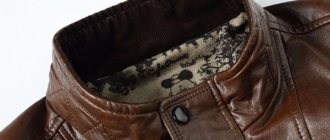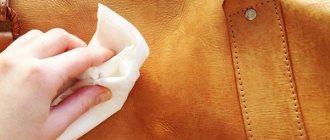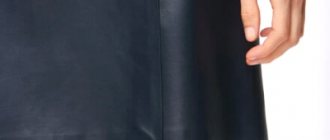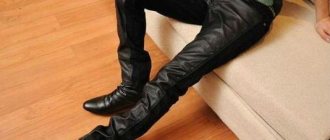Natural fabrics are highly environmentally friendly, they are comfortable, practical, and back in fashion.
With proper care, this material has a long service life, becoming softer and more pleasant over time. The question arises - how to wash linen so as not to spoil it?
In this article we will tell you whether and how to properly wash linen in a washing machine and by hand, and at what degrees linen items should be washed.
Is it possible and at what temperature?
When preparing things for washing, you should decide whether to process them by hand or in the washing machine. It is advisable to start by studying the label for the product. The manufacturer indicates all the care features on it.
When caring for linen, hand washing is the best treatment option. But to save time and effort, you can use a washing machine.
In the washing machine
Before putting an item into the drum of the machine, it is necessary to inspect the product . If necessary, carry out minor repairs and remove stains. The detergent must be selected taking into account the color of the material.
For white fabrics, you need a special preparation designed specifically for things of that color. For blacks there is also a separate remedy. All other linen items are washed with universal powders and gels aimed at colored items.
Procedure:
Place items in the drum.- Set the mode to “delicate”.
- Set the temperature according to the manufacturer's recommendations. Usually it is from +30ºС to +40ºС. Otherwise, things may shrink and fade.
- The spin is set to a minimum - from 400 to 500 rpm. If you neglect this rule, the product may become severely wrinkled.
- Set up an additional rinse.
- Start the wash cycle.
Manually
If you have the opportunity to wash linen items by hand, you should take advantage of it. In this case, washing will be as gentle as possible. It is necessary to prepare a large basin in advance. If it is not available, you can wash it directly in the bath.
Work order:
- Fill a large container with warm water (up to +40ºС).
- Dilute the detergent (powder or gel).
- Dip the item into the soap solution.
- If the item is dirty, you can soap it and leave it soaked for 15-30 minutes
- Wash.
- Rinse, changing the water.
Caring for Roman and French curtains
Before washing, determine the type of fabric, and if the composition contains natural threads - bamboo, palm fibers, jute - use only dry cleaning or wipe with damp gauze. In other cases, remove them from the cornice, take out the cords and the weight strip. Place in a fabric bag and put on a delicate wash cycle, do not wring out.
Dry in a vertical position in the apartment, or on a cornice, insert the guide and cords into the dried product. Iron only stiffer and denser fabrics, always from the inside out.
For French ones, various types of fabrics are used: cambric, silk. They are also made from veil and light organza. They use smooth, dense silk and polyester fabrics. It is better to dry-clean satin, silk, and nylon items; only items made from thin fabrics can be washed at home. Do not wring out, dry only in a vertical position. To avoid ironing, buy wrinkle-resistant fabrics.
How to remove stains correctly?
The appearance of stains on clothes during wear or on home textiles is not a rare thing. The use of store-bought stain removers and folk recipes will help solve the problem.
It should be borne in mind that stains from flax are very difficult to remove. Many old stains are almost impossible to remove.
The sooner you start removing the stain, the higher the chance of removing it completely.
Fat
The following recipe will help
you deal with greasy stains on linen clothes or tablecloths
- pour 0.2 l into a bowl. cold water;
- pour in 1 tsp. ammonia;
- using a sponge or small sponge, treat stains with wiping and blotting movements;
- after the greasy trace has disappeared, rinse the item in water;
- wash in the usual way.
The following recipe is also suitable for removing fat from flax
- Mix 5 tbsp in a container. l. ammonia, 1 tbsp. l. dishwashing liquid and 1 tbsp. l. alcohol
- Mix.
- Apply the product to the stain with a sponge.
- Leave to sit for 10 minutes.
- Rub.
- Rinse off.
- Wash.
Red wine
Stained clothing or home textiles can be cleaned of traces of red wine. If you get down to business right away, the majority of the pigment can simply be washed off with a stream of water.
The following actions:
- the stain is covered with salt;
- leave for 10 minutes;
- washed off.
For white fabric, you can use non-chlorine bleach.
Ball pen
In order to remove the mark of a ballpoint pen from the material, you can use ordinary laundry soap . The area of fabric is moistened, soaped and rubbed.
If you tackle stain removal right away, the chance of success increases significantly.
Ammonia will also help in this case . But this method is better suited for white linen. A cotton swab is moistened with alcohol and the mark from the pen is treated. After this, the item is washed.
Blood, urine
If the stain on linen is old, it will not be possible to remove it completely. Hydrogen peroxide applied directly from the bottle to the affected area can help with a fresh mark. After the chemical reaction is over, the item is rinsed in cold water and washed.
This method will help deal with stains on white fabric, but with colored ones, you need to be careful, as peroxide can eat away bright colors.
For colored matter, the following recipe may be useful:
- Beat 1 raw yolk into a bowl.
- Add 1 tsp. glycerin.
- Mix.
- Apply with a sponge to the fabric.
- Leave for 2 hours.
- Rinse off with plenty of water.
- Wash.
Coffee
To remove coffee stains, you can use a recipe based on ammonia and glycerin.
Procedure:
- Dilute ammonia (1 tsp) and glycerin (1 tbsp) in 50 grams of water;
- after all the components are mixed, the mixture is carefully applied to the stain with a sponge or cotton swab;
- leave for 10 minutes and wash off;
- the item is completely erased.
How often to wash curtains
There is no clear answer to this question, although all kinds of housekeeping guides recommend doing this at least once every six months. But this may not be enough. The degree of pollution is influenced by many factors.
What to pay attention to before washing
- The type of fabric the curtain is made from. On canvases without antistatic treatment, for example, dust settles faster and in larger quantities.
- Season. In summer, as well as in warm spring and autumn, the windows are open, street dirt easily gets on the panels.
- The purpose of the room in which the decor is located. Thus, kitchen decoration is subjected to intensive treatment with steam, greasy splashes, etc., while in the bedroom or living room there is no such contamination.
Therefore, each housewife decides for herself whether it is time to wash the curtains or not. But we must remember that even if there are no obvious traces of dirt on them, the panels that have been hanging for several months are saturated with dust. You can, of course, periodically clean it with a vacuum cleaner, but this will not solve the problem. Regular water treatments or full dry cleaning are necessary.
Handwash
Reading the manufacturer's recommendations will help you determine the #cleaning method. Curtains purchased in stores must have markings indicating which mode to wash the curtains and other features of the process. If this is not the case, you will have to focus on the composition of the textile and the features of its design. Some fabrics are strictly prohibited from being washed in any way, even by hand. They are taken to the dry cleaner.
Machine processing is also not for everyone. Manual is universal, but not always feasible. If, for example, the panels are very large and dense, the machine will handle them better.
Instagram metla_nsk
Instagram metla_nsk
The process of hand washing curtains
- Shake out the panels to remove dust. It is better to do this outside or on the balcony. As a last resort, we shake them in the bathroom so as not to dust the living rooms. Thick curtains can be knocked out with a special device.
- Pour cool water into the bath, add salt to it, stir. Place the curtains in the saline solution. After about an hour, we lift them, straighten them and dip them in water again. We repeat this several times. Drain the water.
- We take clean warm water and dissolve liquid detergent or washing powder in it. If necessary, add bleach if the fabric should be snow-white. We lower it into the solution. Leave for 40-60 minutes. We take out the curtains several times and dip them into the water again. Drain the dirty solution. We repeat everything three or four times.
- Pour clean water into the bath and add conditioner if necessary. Rinse the product several times. We fold it lengthwise like an accordion, squeeze it out lightly, and hang it over the bathtub to drain the water.
This cleaning method is suitable for delicate textiles that do not tolerate machine washing well: items made of silk, wool, thin nylon tulle, etc.
Fabric bleaching
Bleaching of linen fabrics is used quite often. It is important not to use products with chlorine. This chemical is detrimental to linen; it destroys the fibers of the fabric, accelerating the wear of the material and leading to the deterioration of the entire thing.
White linen can be bleached with oxygen-containing laundry detergents or using folk recipes.
Ammonia
A simple recipe will help remove yellowness from fabric:
- Pour non-hot water (3 liters) into a container.
- Add detergent.
- Pour in 3 tbsp. l. ammonia.
- Soak the item for 3 hours.
- Wash.
- Rinse.
Hydrogen peroxide
The soaking solution is prepared based on the proportion:
- 3 l. water;
- 9 tbsp. l. peroxide.
To achieve results, you need to soak things for a long time. From 12 hours to 24 hours. After this, the textiles are washed in the usual way.
Turpentine
One of the bleaching substances is turpentine, add 2 tbsp. l. onto a basin of soapy water . Soak the item in the prepared solution for 8 hours. After this, the product needs to be washed.
Velvet curtains
Now let's figure out how to wash velvet curtains. Improper care will spoil the texture of capricious fabric and lead to its deformation. In order not to take risks, it is better to have the product dry cleaned by professionals.
If you decide to wash your velvet curtains yourself, do it correctly. Delicate pile is afraid of prolonged contact with water - this leads to deformation. Remember the following rules:
- fold the curtains into a bathtub filled with water (not hotter than 30 degrees);
- It is better to turn the fabric inside out so that the lint is inside;
- do not wrinkle or rinse too intensely - act carefully and gently;
- for drying, you need a flat surface on which you can lay out the fabric without folds or bends (bald spots remain in such places);
- Under the fabric you need to place a sheet or blanket that absorbs water (they need to be changed periodically).
Velvet curtains should be hung slightly damp on the cornice.
Do new linen items need washing?
New items that have just been purchased and have never been used can and should be washed.
This will remove any remaining dye and chemicals used to treat fabrics . In the process of manufacturing flax products, their packaging, transportation and sale, many people come into contact with them.
Before introducing a new item into use, it is recommended to wash it. This is especially important for clothing, baby items, bedding and cutlery.
Some manufacturers subject linen products to pre-treatment before going on sale, after which the item will no longer shrink.
Washing tulle
Tulle curtains can withstand washing very well if you follow some rules:
- first of all, shake the curtain, ridding it partially of dust;
- soak in water with soapy water or a gentle liquid detergent;
- After a while you can start washing. The water should be not hot - no more than 30 degrees Celsius. Can be washed by hand or machine;
- When washing by hand, do not rub or stretch the fabric;
- in case of machine washing, turn off the spin cycle;
- do not twist the tulle, just shake the wet fabric and dry it straightened;
- You can immediately hang such a curtain on the window; it usually dries evenly, without wrinkles, and in a short period of time.
How to dry and iron?
The best option for drying linen products is to hang them in the fresh air. If you do this at home, you should choose a dry room with good air access.
Linen bed linen, towels and napkins are dried by throwing them over a rope, shirts and blouses - on trempels, trousers and skirts - on hangers with special clips.
When hanging things, you need to straighten them and give them the required shape . This must be done immediately, since flax itself dries quickly.
Ironing begins when the material is not yet completely dry. Dried clothes will be much more difficult to iron. When ironing, the fabric can be moistened and steam can be used.
After such treatment, things should be left to lie on a horizontal plane, giving them time to completely dry and cool. Only completely dry items can be stored.
Cotton or linen
Tulle made of linen or cotton requires no less delicate and careful treatment and care than the same product made of organza. It is important to remember that it is very difficult to iron such a curtain, so when machine washing it is necessary to turn on the delicate spin mode. There are two ways you can iron cotton fabric.
Without using an iron. Before smoothing cotton tulle in this way, you need to remember that after washing the curtain cannot be wrung out; the product must be hung wet. It may take some time for the fabric to dry completely, but it's worth the wait - cotton tulle looks fresh and perfect.
Smoothing with an iron. The fabric is processed in this way if it is completely dry. Before ironing the curtain, you need to set the iron to the desired temperature - +100...+120°C. You need to iron cotton using a household appliance through a damp gauze cloth; it is also important to remember that the procedure must be carried out from the wrong side. Smoothing tulle using this method is a rather painstaking and time-consuming process, but the resulting result can exceed all expectations.
You may also be interested in: Waffle robes and their features
Recommendations
The following tips will help you cope with washing linen
- Due to its high absorbency, washing linen requires a lot of water.
- If you use a machine for washing, it is recommended not to load it completely. This will allow things to wash better.
- Before washing linen items, it is necessary to sort them, separating white and colored items.
After washing, linen needs a good rinsing. When washing automatically, this is achieved by setting an additional rinse; when washing manually, by changing the water several times.- A slight shrinkage after washing is natural for linen items, the material of which does not contain synthetic fibers.
If the treatment was carried out correctly, then when worn or ironed, linen clothing will return to its shape. The lower the percentage of synthetics in the fabric, the more shrinkage it can give. - After washing, you should not twist things; it is better to allow the water to drain freely.
- Pre-soaking items improves the quality of washing. After it, the item can be washed either by hand or in a machine.
- Washing linen is easier in soft water than in hard water.
- If you doubt the safety of a fabric stain remover, you should first test it on an inconspicuous area.
If linen fabric has embroidery, the item should not be soaked.
You will find maximum useful information about washing clothes and various fabric products here.
Ironing
Whatever the curtains are: small or large, this does not really affect the care.
Of course, it’s easier to handle small canvases, but there won’t be any particular difficulties with long ones either. Features of the curtain ironing process:
To process products, you first need to prepare a workplace.- There should be enough free space around the ironing board (or table). This will allow you to move freely without stepping on the fabric.
- In front of the ironing board, you can place several chairs or a table on which the ironed fabrics will be laid.
- First of all, you need to smooth out the frills and edging.
- If there is embroidery or embossing, it should be slightly moistened and ironed from the wrong side, pressing the iron well to the surface.
- You need to start ironing the curtain from its top, carefully and consistently moving down.
- You should not hold the iron in one place for a long time to avoid overheating of the material and possible unpleasant consequences: stains, scorches, melting of fabric fibers.
The ironed part of the curtain should be placed on the backs of chairs or a table placed in front of the ironing board. You can also hire an assistant to hold the ironed fabric in place.
When ironing curtains, you need to know the type of fabric, what temperature conditions are recommended for it, and whether steam treatment is acceptable or not . After all, if the material is damaged in a small area, the entire product will become unusable.
| Material | Temperature | Peculiarities |
| Cotton, linen | 140 – 180 °C | For a high-quality result, it is recommended to moisten the fabric (spray from a spray bottle) and create strong steam. The iron is pressed against the surface with force. |
| Silk | 80°С – 100°С | The fabric is ironed through a thin cloth (not gauze) or from the wrong side. Silk cannot be moistened or steamed. |
| Chiffon, organza | 60°С – 80°С | Iron through damp gauze or cloth, without steam or moisture, at minimum temperatures. The soleplate of the iron must be perfectly clean. |
| Polyester, nylon | 60°C | Iron very carefully, without iron pressure. Humidification or steam formation is excluded. |
| Nylon | minimum | Most often, ironing is not required after washing. Treat with steam if necessary. In extreme cases, it can be easily ironed at a minimum temperature. |
This video will show you how to quickly iron curtains:











